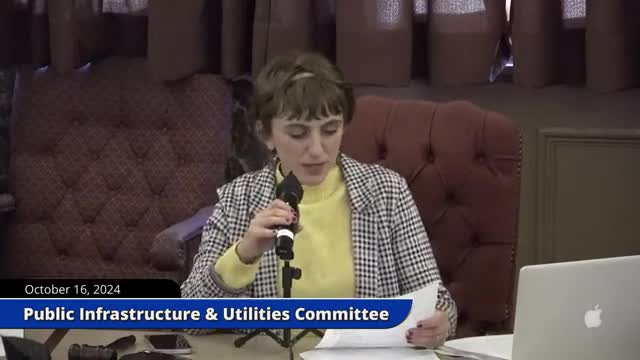St Louis tackles lead service line crisis with new regulations
October 14, 2024 | St. Louis City, St. Louis County, Missouri
This article was created by AI summarizing key points discussed. AI makes mistakes, so for full details and context, please refer to the video of the full meeting. Please report any errors so we can fix them. Report an error »

In a recent government meeting, the St. Louis Water Division presented critical updates regarding the replacement of lead service lines in response to new regulations from the Environmental Protection Agency (EPA). The meeting highlighted the impending challenges and strategies for addressing lead contamination in the city's water supply.
Director Kurt Scooby, who announced his upcoming retirement, expressed gratitude for the support he received during his tenure. He introduced Niraj Patel, who will succeed him as the director of public utilities starting November 1. Patel outlined the significant implications of the EPA's new Lead and Copper Rule Improvements, which mandate the replacement of lead service lines by 2037.
The presentation detailed the history of lead usage in plumbing, the health risks associated with lead exposure, and the current status of St. Louis's water quality. Notably, the city has over 9,000 identified lead service lines, with an alarming 57,000 lines categorized as unknown. The Water Division is actively working to update its inventory, which is crucial for compliance with the October 2024 deadline for public disclosure.
Patel emphasized that the responsibility for replacing lead service lines falls on homeowners, with an estimated cost of $13,000 per line. However, the city is exploring funding opportunities through federal grants, including $15 billion allocated under the bipartisan infrastructure law. Despite these efforts, officials acknowledged that the total cost of replacing all lead lines could reach $90 billion, raising concerns about the financial burden on residents.
The meeting also addressed public health concerns, with Patel reassuring attendees that the city's water quality remains high, with lead levels consistently below the new EPA action level of 10 parts per billion. Residents will receive notification letters in early November regarding their service lines, along with information on health risks and available funding.
As the city prepares for this extensive and costly project, officials are committed to keeping the public informed and minimizing the financial impact on homeowners. The Water Division plans to utilize an interactive online tool for residents to check their service line status and report any updates, aiming for transparency and community engagement throughout the process.
Director Kurt Scooby, who announced his upcoming retirement, expressed gratitude for the support he received during his tenure. He introduced Niraj Patel, who will succeed him as the director of public utilities starting November 1. Patel outlined the significant implications of the EPA's new Lead and Copper Rule Improvements, which mandate the replacement of lead service lines by 2037.
The presentation detailed the history of lead usage in plumbing, the health risks associated with lead exposure, and the current status of St. Louis's water quality. Notably, the city has over 9,000 identified lead service lines, with an alarming 57,000 lines categorized as unknown. The Water Division is actively working to update its inventory, which is crucial for compliance with the October 2024 deadline for public disclosure.
Patel emphasized that the responsibility for replacing lead service lines falls on homeowners, with an estimated cost of $13,000 per line. However, the city is exploring funding opportunities through federal grants, including $15 billion allocated under the bipartisan infrastructure law. Despite these efforts, officials acknowledged that the total cost of replacing all lead lines could reach $90 billion, raising concerns about the financial burden on residents.
The meeting also addressed public health concerns, with Patel reassuring attendees that the city's water quality remains high, with lead levels consistently below the new EPA action level of 10 parts per billion. Residents will receive notification letters in early November regarding their service lines, along with information on health risks and available funding.
As the city prepares for this extensive and costly project, officials are committed to keeping the public informed and minimizing the financial impact on homeowners. The Water Division plans to utilize an interactive online tool for residents to check their service line status and report any updates, aiming for transparency and community engagement throughout the process.
View full meeting
This article is based on a recent meeting—watch the full video and explore the complete transcript for deeper insights into the discussion.
View full meeting
